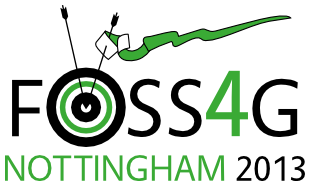Presentation
CrossLinks: Seamlessly Integrate Geospatial Fragments With Other Media
Philippe Duchesne (High Latitudes)
The CrossLinks project aims at defining both a representation model and a visualization/authoring tool for data mosaics, i.e. mashups involving fragments of online datasets such as video, audio, text and structured data, including geographical data. The goal is to be able to link parts of data entities and tie them together in such added-value mosaics, and provide the tools to store, collaboratively author and visualize them. The resulting platform is intended both for collaborative cross-annotation of various media types, and for story telling involving these media types. This is achieved in a three steps approach, involving first a formalization of URI fragments, then the definition of a representation format for data mosaics, and finally an authoring and visualization application developed on top of these standards. Geo-data being a major part of online data, both in terms of quantity and relevance, special attention has been brought to its specificities in each of these steps. As a result, one of the data dimensions taken into account in the URI data fragment syntax is the geospatial dimension. As for the representation format and the implemented UI, focus is put on the ability to link fragments of geospatial mimetypes such as KML or GML, and also resources made available via OGC services. A major feature and challenge was to integrate seamlessly the display of linked data fragments within an annotated document. That means overlaying a map with bits of other medias, inserting map insets within other medias, and have an intuitive display of links between these fragments. The developed application is a browser-based UI relying on an RDF triple store. The client part uses several javascript libraries for the manipulation of supported mime types, including OpenLayers for the manipulation of geo resources. The server features a uSeekM/Sesame/PostGIS stack to provide a GeoSPARQL-enabled triple store, and serves data mosaics both through a REST/JSON and a SPARQL endpoint. The presentation of both the proposed standard and the resulting application shows how the geospatial dimension benefits from being treated equally to other dimensions, and how the integrated portrayal of these linked and heterogeneous data bits can offer a new browsing experience. It also shows how URI fragments can offer much finer-grained linked data.
